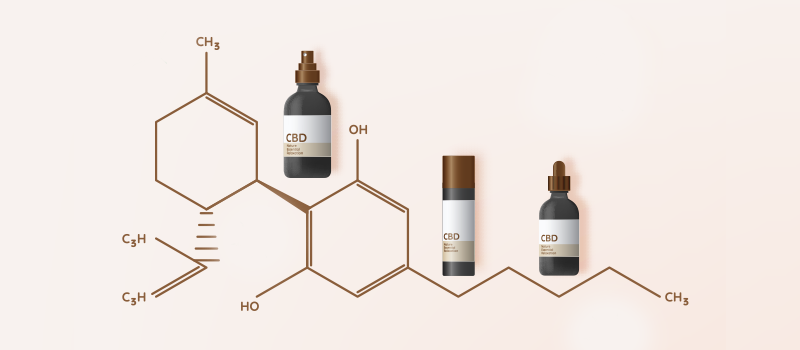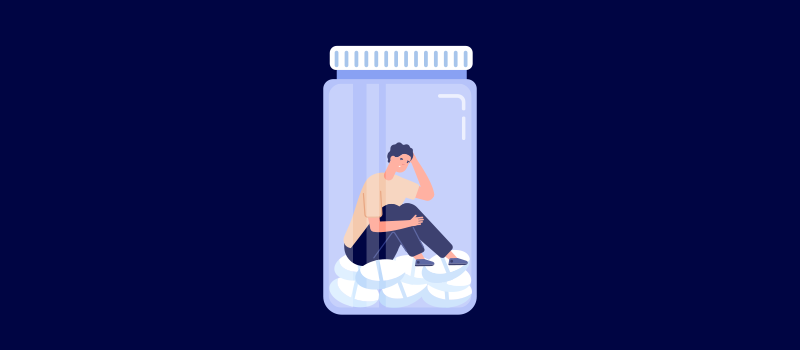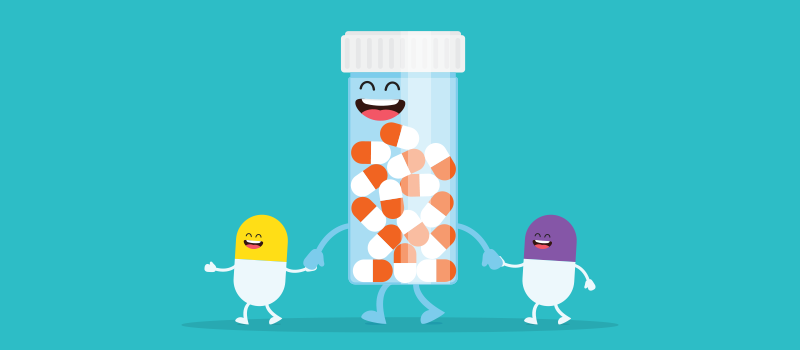What’s the Buzz
The Bee Healthy Blog
Suboxone vs. Methadone: What's a better opioid addiction treatment option?

Opioid addiction is a public health crisis in the United States. Over 70% of drug overdose deaths in the country involve opioids. Medication-assisted treatment (MAT) uses medications to treat opioid use disorders (OUD). Along with counseling and behavioral therapies, this approach can be very effective in helping people sustain recovery.
Three medications have been approved by the U.S. Food and Drug Administration (FDA) for medication-assisted treatment of opioid dependence: methadone, buprenorphine, and naltrexone. Suboxone is the brand name of a combination medication that contains buprenorphine and naltrexone.
All three medications are safe and effective in treating opioid addiction. If you or someone you love is struggling with opioid use disorder, you may be offered these options during addiction treatment.
Please continue reading to understand the differences between these essential medicines. This will help you make the right choice during your recovery from addiction to opioid drugs.
Is methadone effective in treating opioid drug abuse and addiction?
Methadone has been used for medication-assisted treatment of opioid addiction worldwide for years. It is an opioid agonist and is a very effective painkiller itself. However, methadone treatment can help people with an opioid use disorder, i.e., those with an addiction to heroin or prescription opioid painkillers like OxyContin, Vicodin, and other opioid drugs.
Methadone maintenance treatment works by reducing the severity of withdrawal symptoms when someone quits using opioid drugs. Methadone works by attaching to the opioid receptors in the central nervous system; these are the same receptors that other opioids like heroin and prescription painkillers bind to. Therefore, maintenance treatment with methadone helps reduce cravings.
You may think that this approach is replacing one addiction with another. However, this is not true. The effects of methadone are mild and gradual, which makes it safer than commonly abused opioids. Studies have shown that medication-assisted treatment with methadone can significantly reduce opioid addiction and related risky behaviors like sharing needles.
What is the success rate of Suboxone treatment?
Besides methadone, the FDA has also approved Suboxone for medication-assisted treatment of opioid use disorder. Suboxone is the brand name for a combination medication that includes buprenorphine (a partial opioid agonist) and naltrexone (a drug also used to treat alcohol abuse). Studies have shown that buprenorphine maintenance versus placebo can be a very effective way to treat opioid addiction to heroin and other drugs.
One study looked at 600 patients on opioid agonist treatment with Suboxone. Half the participants in the study also received addiction counseling from trained mental health or substance abuse professionals. The results found that nearly half of the participants in the study had reduced prescription painkiller abuse with 12 weeks or more of Suboxone treatment. When Suboxone was discontinued, the success rate dropped to less than 9%.
Is methadone more effective than Suboxone?
Many studies have looked at methadone compared to buprenorphine. Both are opioid agonists that are used for maintenance treatment in people with opioid dependence. The findings show that treatment retention is significantly lower with flexible doses of buprenorphine compared to methadone. However, in people who remain in treatment, both buprenorphine and methadone are equal in suppressing heroin use and prescription painkiller abuse.
Studies have also shown that low-dose methadone retains more patients in treatment than low or medium-dose buprenorphine. However, low-dose methadone is inferior to medium or high doses of buprenorphine in suppressing illicit opioid use.
Head to head, medium doses of buprenorphine versus methadone, buprenorphine does not have any advantage over methadone in treatment retention. However, it is less effective in suppressing opioid abuse.
In a nutshell, it is important for healthcare providers to identify the correct dose for treatment retention and effective suppression of heroin use or prescription opioid abuse.
What advantages does buprenorphine treatment have over methadone treatment?
Buprenorphine has several advantages over methadone in medication-assisted treatment for opioid use disorder.
Lower potential for abuse
Methadone is a full opioid agonist, while buprenorphine is a partial agonist. This means buprenorphine is not as powerful as methadone. It causes less euphoria and has less potential for abuse compared to methadone while still reducing withdrawal symptoms.
Ceiling effect
Buprenorphine has a ceiling effect, meaning that taking more of this medication does not increase its effects after a certain point. This means buprenorphine has less abuse potential. Also, it causes less respiratory depression than methadone and therefore has a lower risk of opioid overdose. Methadone does not have this protective ceiling effect, so the risk of methadone overdose is higher.
Less frequent dosing schedule
Another advantage is that the half-life of buprenorphine is longer (36-48 hours) compared to methadone (24-36 hours). Meaning, methadone remains in the body for a shorter time. This means medical professionals can prescribe buprenorphine on a daily or alternate day dosing frequency. Methadone requires a daily dosing regimen to work effectively as an opioid blocker.
Convenience and flexibility
Methadone is prescribed and distributed every day from special methadone clinics. Indeed, the restrictive take-home policies of methadone require most patients to attend clinics daily or near-daily. This has given methadone the moniker of “liquid handcuffs” and made it unpopular with many patients, leading to low treatment uptake and retention rates.
People on buprenorphine medication-assisted treatment do not need to visit special clinics every day to pick up their medication. Because this is a generally safer option than methadone, certified physicians in regular medical clinics can prescribe high-dose buprenorphine. Patients maintained on buprenorphine who are stable only need to visit a physician every 2-4 weeks during buprenorphine treatment for opioid use disorder.
Milder withdrawal symptoms
Another difference between methadone and buprenorphine is that dependence on buprenorphine is usually mild to moderate, with a mild degree of uncomfortable withdrawal symptoms. Dependence on methadone can be moderate to severe with severe withdrawal symptoms.
Disadvantages of buprenorphine
There are some disadvantages of buprenorphine versus methadone. One is that buprenorphine is only available in tablet preparation and has a risk of injection by heroin users. Methadone, on the other hand, is available as an oral liquid, which has less risk of injection.
The other disadvantage is that low-dose buprenorphine treatment has less retention than methadone treatment. However, buprenorphine at higher doses has similar patient retention levels as methadone.
Choosing between buprenorphine and methadone
Several factors are important when choosing the right opioid replacement therapy, including patient and clinician preferences, local guidelines, and program availability.
Severity of dependence
One factor that plays a key role in deciding on an opioid agonist treatment is the severity of a person’s opioid dependence. Buprenorphine is less potent and is probably better suited to those with mild to moderate opioid addiction, while methadone can be used to treat opioid addiction of all severity levels.
Risk of divergence
Methadone is preferable in patients with a high risk of divergence because it is more supervised than buprenorphine.
Precipitated withdrawal
Buprenorphine binds with great affinity to opioid receptors. This means it can displace circulating opioids from opioid receptors, which can lead to a unique problem called precipitated withdrawal when buprenorphine treatment is first started. For this reason, when heroin users are started on buprenorphine or patients are transferred from methadone to buprenorphine, it must be done with great caution.
Special considerations
Methadone is usually preferred to treat illicit opioid use (heroin dependence) in pregnant women. While there is growing evidence that buprenorphine may be safe during pregnancy, more studies are needed.
The Takeaway
Both methadone and Suboxone can be effective treatments for people with opioid use disorder. Healthcare providers can help you decide which is the better option for you. Keep in mind that opioid use disorder is a chronic condition. There is no maximum limit on how long an opioid medication such as methadone or Suboxone can be used for maintenance. For some patients, medication-assisted treatment may continue indefinitely. Therefore, there is a need for periodic reevaluation of medication-assisted treatment with methadone or Suboxone.
References:











SOCIAL